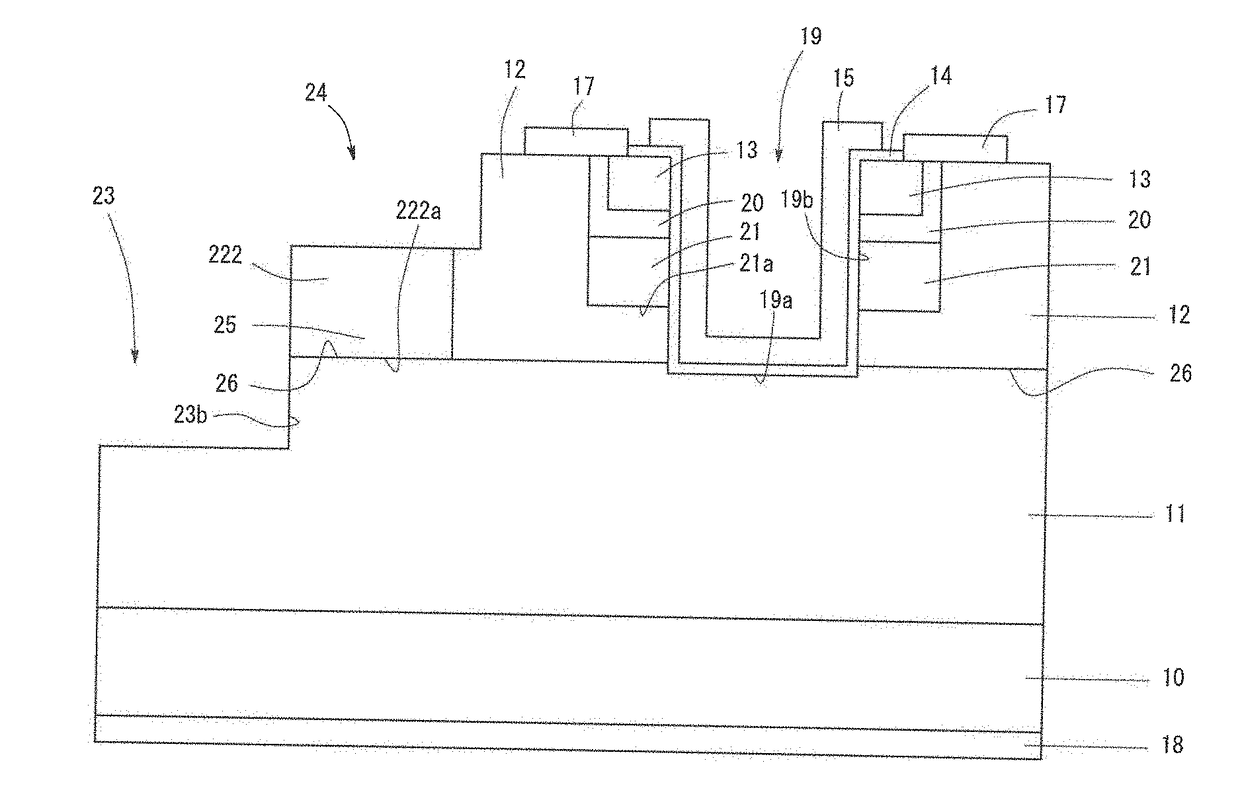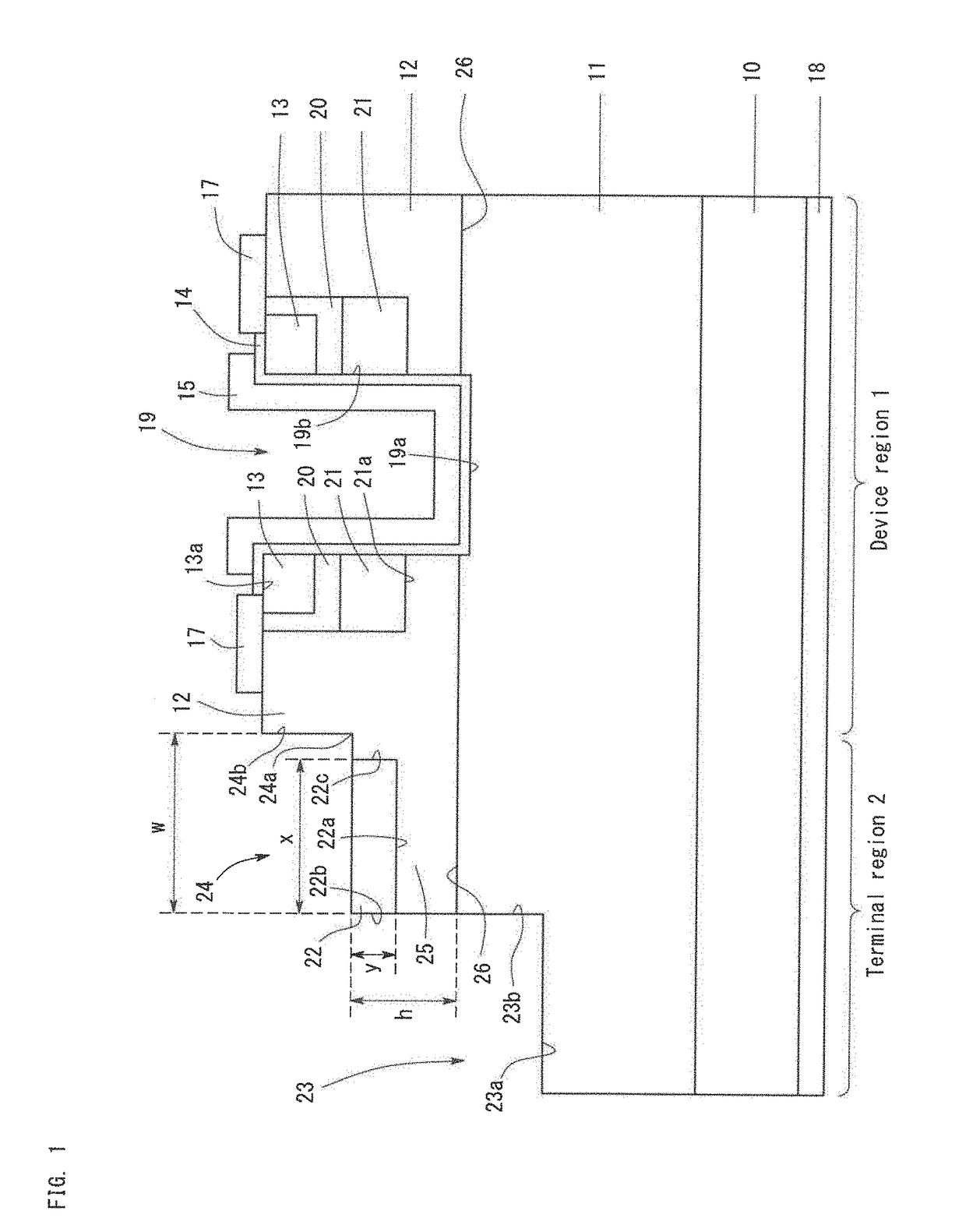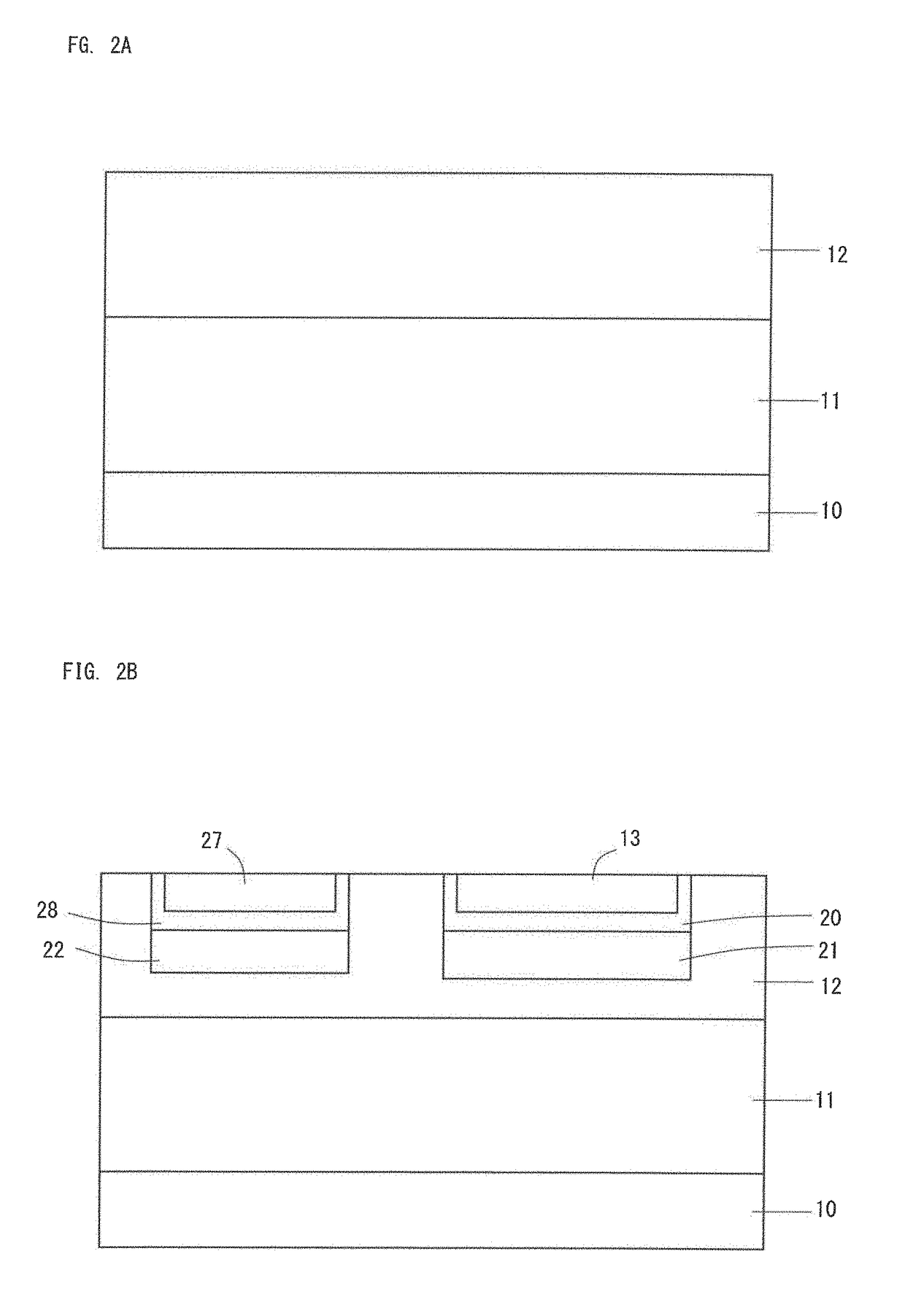Semiconductor device and production method therefor
a technology of semiconductors and semiconductors, applied in the direction of semiconductor devices, basic electric elements, electrical equipment, etc., can solve the problems of insufficient improvement of breakdown voltage and inability to reach the design value of breakdown voltage, and achieve the effects of low carrier concentration, small thickness, and easy forming
- Summary
- Abstract
- Description
- Claims
- Application Information
AI Technical Summary
Benefits of technology
Problems solved by technology
Method used
Image
Examples
embodiment 1
[0032]FIG. 1 is a sketch showing the structure of a semiconductor device according to Embodiment 1. The semiconductor device according to Embodiment 1 is a trench-type vertical MOSFET, and comprises a substrate 10, a first n-type layer 11 (drift region) deposited on the substrate 10, a p-type layer 12 (body region) deposited on the first n-type layer 11, and a second n-type layer 13 (source region) formed on a part of the p-type layer 12 as shown in FIG. 1. The semiconductor device further comprises a gate insulating film 14, a gate electrode 15, a source electrode 17, a drain electrode 18, and a trench 19. The semiconductor device according to Embodiment 1 comprises a device region 1 being disposed at the center of the device and functioning and operating as MOSFET, and a terminal region 2 being formed in the outer periphery of the device region 1 so as to surround the device region 1. The terminal region 2 is a region having a structure to improve the breakdown voltage of the semi...
embodiment 2
[0087]FIG. 5 is a sketch showing the structure of a semiconductor device according to Embodiment 2. The semiconductor device according to Embodiment 2 has the same structure as the semiconductor device according to Embodiment 1 except for that the gradient distributed low concentration p-type layer region 22 is replaced with the gradient distributed low concentration p-type layer region 222.
[0088]As shown in FIG. 5, the bottom surface 222a where the gradient distributed low concentration p-type layer region 222 is in contact with the p-type layer 12 is closer to the first n-type layer 11 than the bottom surface 21a where the gradient distributed low concentration p-type layer region 21 is in contact with the p-type layer 12 is to the first n-type layer 11. That is, a height difference Δy is provided between the bottom surface 222a of the gradient distributed low concentration p-type layer region 222 and the bottom surface 21a of the gradient distributed low concentration p-type regi...
embodiment 3
[0090]FIG. 6 is a sketch showing the structure of the semiconductor device according to Embodiment 3. The semiconductor device according to Embodiment 3 has the structure in which the second n-type layer 13 is replaced with the second n-type layer 313, and the low concentration p-type layer region 20 and the gradient distributed low concentration p-type layer region 21 are not formed in the semiconductor device according to Embodiment 1. Other structure is the same as the structure of the semiconductor device according to Embodiment 1.
[0091]The second n-type layer 313 is a layer made of Si-doped n-GaN formed by crystal growth through MOCVD, and obtains an n-type conductivity by supplying a dopant gas in the crystal growth. Since n-GaN is not formed by ion implantation unlike the second n-type layer 13, a low concentration p-type layer region 20 or a gradient distributed low concentration p-type layer region 21 is not formed just below the second n-type layer 313. In other words, onl...
PUM
 Login to View More
Login to View More Abstract
Description
Claims
Application Information
 Login to View More
Login to View More - R&D
- Intellectual Property
- Life Sciences
- Materials
- Tech Scout
- Unparalleled Data Quality
- Higher Quality Content
- 60% Fewer Hallucinations
Browse by: Latest US Patents, China's latest patents, Technical Efficacy Thesaurus, Application Domain, Technology Topic, Popular Technical Reports.
© 2025 PatSnap. All rights reserved.Legal|Privacy policy|Modern Slavery Act Transparency Statement|Sitemap|About US| Contact US: help@patsnap.com



